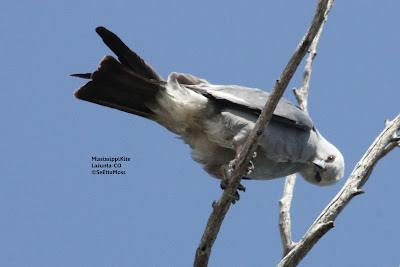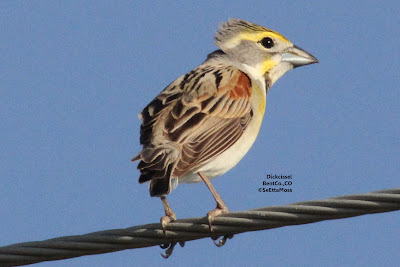Olive-sided Flycatcher, still declining in numbers

This Olive-sided Flycatcher was an unexpected surprise on my trip to the Lower Arkansas Valley of Colorado last week. I found it giving it's 'quick free beer' call in the limited forest edge around Lake Holbrook. The top photo is really such a classic view showing it's distinctive dark vest an it's very short tail. The is a species of concern with continuing significant population decline. The tufts of white feathers on it's rump, another feature of this species though not always visible, can be seen in fluffed up bird in the bottom pic. SeEtta


